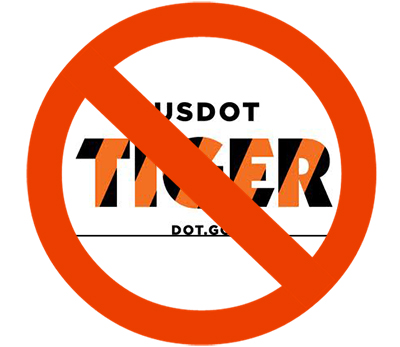U.S. ports may face difficult financing decisions, says Fitch Ratings
Recent partnerships between regional ports could lower capital expenses in the long run for some entities, partially offsetting the cuts.

Proposed cuts to an existing grant program would force U.S. ports to choose between issuing debt to keep capital improvements on schedule, thus raising their leverage positions, or delaying capital programs to allow cash from operations to accumulate, Fitch Ratings says.
However, recent partnerships between regional ports could lower capital expenses in the long run for some entities, partially offsetting the cuts.
The 2018 federal budget proposes eliminating funding for the Transportation Investment Generating Economic Recovery (TIGER) grant program, on which many seaports rely to fund a portion of their capital improvement programs.
A new grant program has been implemented, the Fostering Advancements in Shipping and Transportation for the Long-term Achievement of National Efficiencies (FASTLANE), which the federal government noted should make up for the removal of TIGER grants. However, FASTLANE mainly targets larger projects costing over $100 million. TIGER grants have historically been easier for ports to obtain and can be used for a broad array of project sizes and types.
The growth of partnerships between regional nearby ports could help some gateways offset funding cuts by reducing capital expenses, Fitch analysts add. Strategic alliances in which one port may focus on, for example, cold storage while its partner specializes in general bulk could mean lower capital expenditures for both.
But analysts say only a narrow range of partnerships, if any, will lower the cost of ports’ most expensive capital project: port deepening. Ports that are not yet accessible for post-Panamax ships face large capital expenditures to be post-Panamax ready. The only potential for savings related to port deepening is for ports within an alliance to focus on different sized ships, with one port deepening to accept post-Panamax ships while the other targets smaller ships.
The overall trend in shipping is towards larger ships and ports may still need to forge ahead with deepening projects over the long term. Additionally, most ports that are currently considering deepening projects are too far from others to make such an alliance on large-scale capex workable.
Partnerships also give ports more power when they negotiate fees with shipping companies. As shipping lines create larger alliances, negotiations tend to favor shippers. Ports can strive to balance this dynamic by creating alliances of their own. The Northwest Seaport Alliance, created by the ports of Seattle and Tacoma, which both serve the Puget Sound, have seen strong growth in volume after the creation of their strategic alliance.
 Emma Griffith, Director, Global Infrastructure and Project Finance for Fitch told LM in an interview that the Georgia Ports Authority and Virginia Port Authority have gained approval from the Federal Maritime Commission for an agreement (the East Coast Gateway Terminal Agreement) to share information and best practices on operating data, development plans, joint marketing, and cargo lines they will target.
Emma Griffith, Director, Global Infrastructure and Project Finance for Fitch told LM in an interview that the Georgia Ports Authority and Virginia Port Authority have gained approval from the Federal Maritime Commission for an agreement (the East Coast Gateway Terminal Agreement) to share information and best practices on operating data, development plans, joint marketing, and cargo lines they will target.
As reported in LM, several private terminal operators (APM Terminals, DP World, Hutchinson Port Holdings, and others) entered into a similar agreement (the Global Ports Group Agreement) in late 2016.
“Other ports where cooperation may be warranted include facilities in close proximity, such as Miami and Port Everglades or Savannah and Charleston,” said Griffith. “South Carolina and Georgia State Ports Authorities are in the early stages of a joint venture to develop a new container port in Jasper, SC (Jasper Ocean Terminal) to handle anticipated cargo throughput demand over the next 35 years. We view these initiatives positively, as they may reduce costly construction of redundant infrastructure, particularly on the competitive East Coast.”
The fiscal effectiveness of these port partnerships remains unclear. Fitch would not consider a rating or outlook change until the partnership has shown a positive and sustained impact on volume and other financial metrics, such as debt service coverage and leverage. Fitch's 2017 outlook for U.S. ports is stable.

Article Topics
News & Resources
Latest in Materials Handling
Beckhoff USA opens new office in Austin, Texas Manhattan Associates selects TeamViewer as partner for warehouse vision picking ASME Foundation wins grant for technical workforce development The (Not So) Secret Weapons: How Key Cabinets and Asset Management Lockers Are Changing Supply Chain Operations MODEX C-Suite Interview with Harold Vanasse: The perfect blend of automation and sustainability Consultant and industry leader John M. Hill passes on at age 86 Registration open for Pack Expo International 2024 More Materials HandlingAbout the Author
Subscribe to Materials Handling Magazine

Find out what the world's most innovative companies are doing to improve productivity in their plants and distribution centers.
Start your FREE subscription today.
April 2024 Modern Materials Handling

Latest Resources










